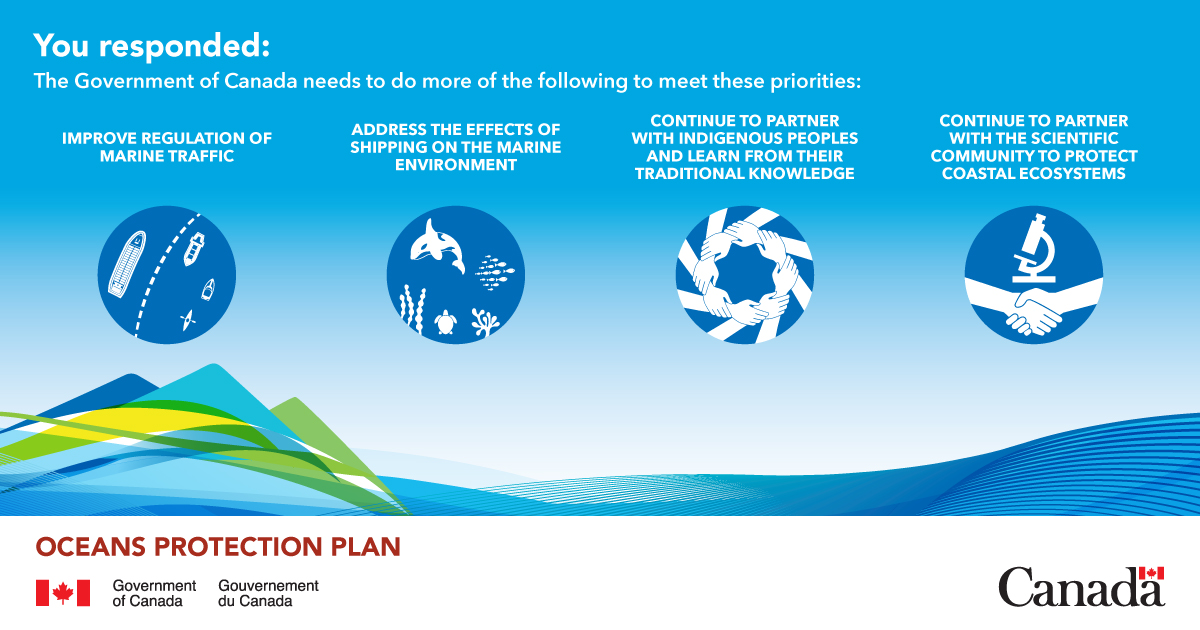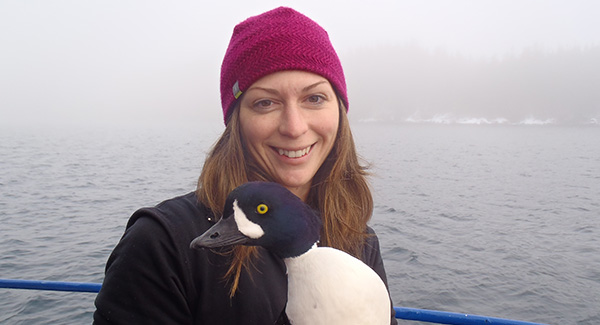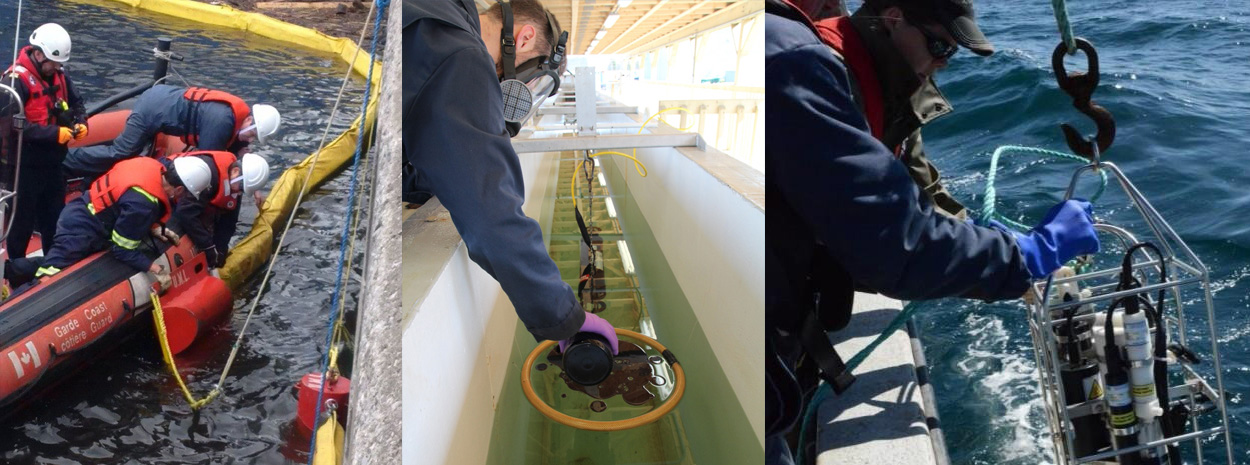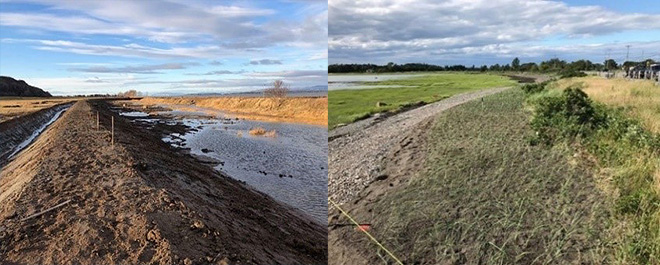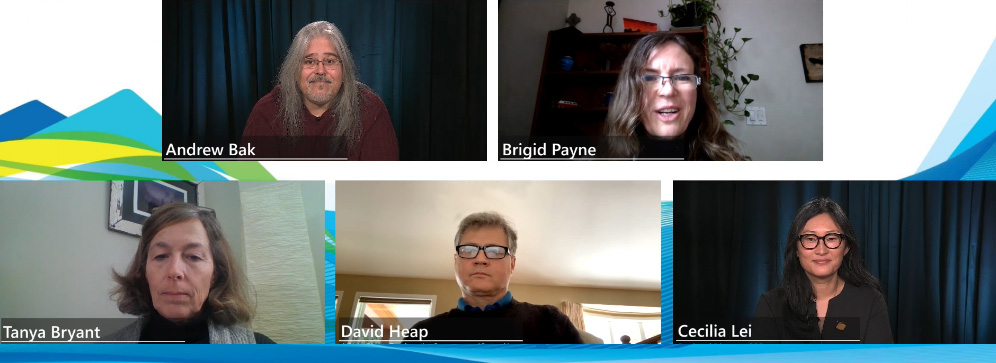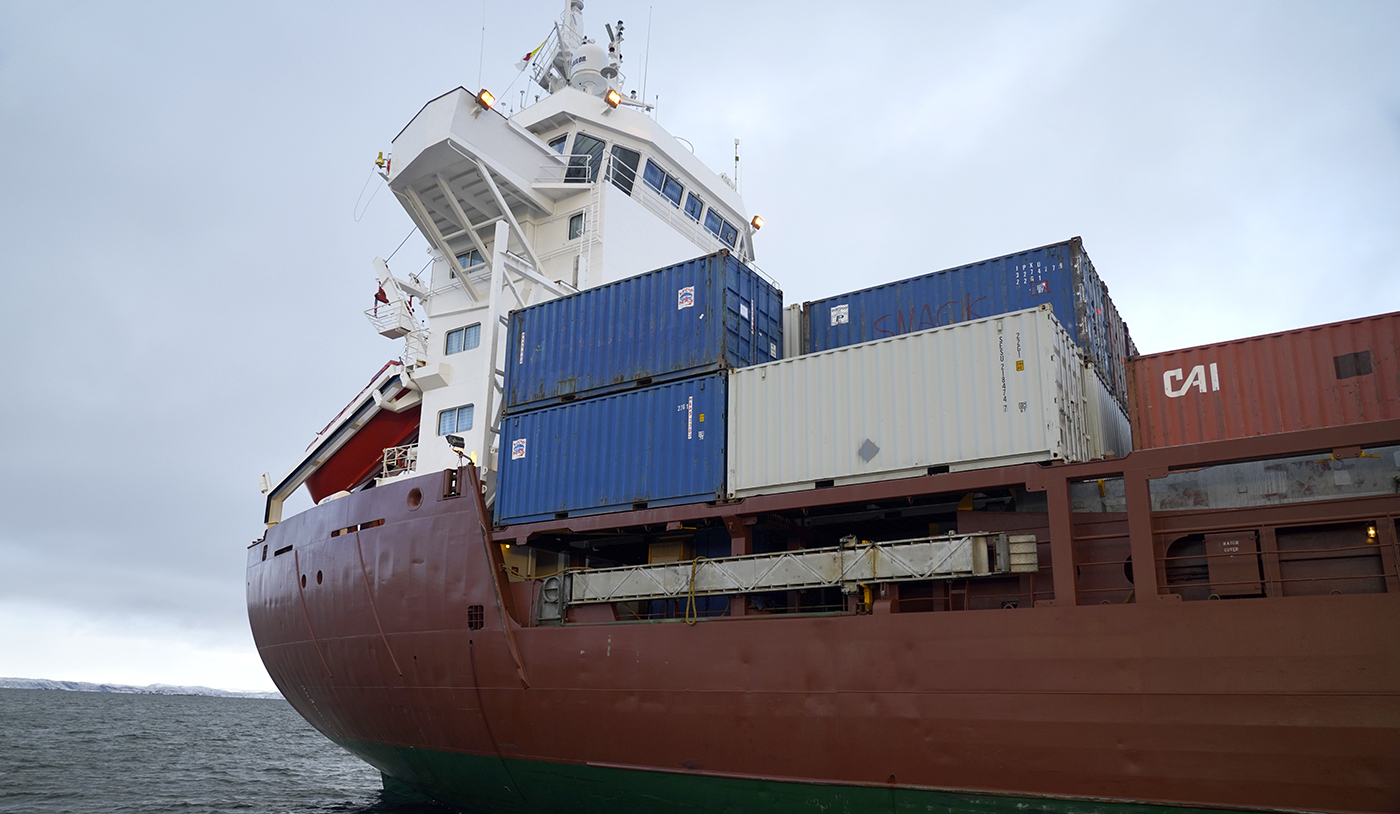Dear Friends and Partners of the Oceans Protection Plan,
The land on which I write this letter is part of the traditional Territory of the Anishinabe Algonquin Nation people. As you are reading this letter from coast-to-coast-to-coast, I encourage you to take a moment to reflect on the importance of Indigenous reconciliation. The ongoing work of Canada’s Oceans Protection Plan (OPP) cannot be accomplished without unprecedented collaboration with Indigenous peoples and coastal communities.
In November, we marked the fourth anniversary of the Oceans Protection Plan. Please read our Report to Canadians: Investing in our coasts through the Oceans Protection Plan, which lists hundreds of projects that have strengthened marine safety and the protection of our coasts and waterways since the Plan was launched in 2016. In this edition of the newsletter, we are highlighting some of these projects that are occurring from every coast—from the Pacific to the Arctic to the Atlantic.
We would like your feedback on what has worked, what could be improved, and what work is left to be done. Leave feedback and/or comments on the Let’s Talk Transportation portal or email us.
I am proud of the work that has been accomplished during this challenging year, especially how government organizations and partners transitioned to virtual engagement to continue delivering on the important commitments of the Oceans Protection Plan.
Marine shipping continues to play an important role in Canada’s economic recovery from COVID-19. Our Oceans Protection Plan commitment—to protect Canada’s greatest resource, our coasts and waterways, for future generations—is more important than ever.
Jane Weldon
Executive Head, Oceans Protection Plan
Transport Canada
Stories from our coasts
Megan is a biologist who specializes in marine bird and terrestrial wildlife at Environment and Climate Change Canada.
Megan Willie, biologist at Environment and Climate Change Canada
“I work for the Canadian Wildlife Service in Delta, BC as the Wildlife Emergency Response Coordinator. I’m part of a national team of coordinators that develop our approach to protecting wildlife and their habitats during an environmental emergency. We use our wildlife data and data collected by many partners to support risk assessments and the development of response strategies during marine incidents.
A healthy marine ecosystem is not only central to maintaining ecological priorities, but it supports our recreational, traditional, and commercial interests. Having worked across the BC coast, I have been able to appreciate firsthand the incredible diversity and richness of our ocean and coastline. Maintaining the health and beauty of these natural resources is central to my values as a Canadian.
I am continually inspired by these amazing marine birds. Many migrate and forage over vast distances, affording us a unique window into the health of the whole marine ecosystem. I am equally inspired by the passionate people from many organizations who come together to protect marine wildlife and habitats during an incident.”
The Oceans Protection Plan has made important investments in marine safety on the west coast—not just for humans, but also for wildlife. These efforts are contributing to baseline information on marine bird abundance, distribution, movements, and health, and include:
- expanded emergency response capacity to protect marine wildlife in the event of an oil spill
- standardized vessel-based at-sea surveys of marine birds
- expanded tracking studies of marine bird movement and migration
- expanded seabird colony surveys
- assessing the effects of petroleum exposure on marine birds
Partnerships in the East Coast ecosystems
(Left to right, images taken before COVID-19) Canadian Coast Guard fleet personnel practicing the use of oil spill response equipment from a Rigid Hull Inflatable Boat; An image of a DFO scientist conducting experiments using an oil ring in the water tank at the Centre for Offshore Oil, Gas and Energy Research at the Bedford Institute of Oceanography; An image showing a DFO scientist collecting physical information about the water column using equipment deployed from a boat in Placentia Bay, NL.
“As a public servant, it is satisfying to contribute to such exciting work that makes an impact in coastal communities, says Lindsey Weber, a Senior Policy Advisor with Fisheries and Oceans Canada in Halifax, Nova Scotia. Through working on the Oceans Protection Plan with colleagues and partners, we are contributing to the vitality of ecosystems and industries in Atlantic Canada.”
The Oceans Protection Plan is working to preserve and restore the Atlantic’s coastlines and marine ecosystems, supported by strong collaborative partnerships across a range of areas, such as:
- Partnerships with Indigenous and coastal communities and local organizations for data collection to enable the protection of sensitive marine habitats and species under the Coastal Environmental Baseline Program
- Strengthening the existing state-of-the-art ocean modelling system for a range of applications, such as improving drift prediction to better understand the behaviour of oil in water
- Research to develop acoustic detection methods for North Atlantic right whales to help prevent collisions
- New search and rescue lifeboat stations and Bay Class vessels to increase search and rescue capacity
- Under the Coastal Restoration Fund, which provides millions of dollars in funding to support coastal communities focused on coastal habitat restoration, to help mitigate against the impacts of marine stressors
- Strengthening the National Marine Communications Traffic Services (MCTS) radar network to ensure the reliability and accuracy of vessel traffic monitoring
Learn more about how these continually evolving projects, such as environmental response, maritime search and rescue, and many others, are being successfully implemented towards the overall aim of better protecting Canada’s Atlantic coasts and waterways.
Whales Tales
Along with specific measures put in place on both the Pacific and Atlantic coasts, some new innovative projects are underway to support the survival and recovery of the Southern Resident killer whales and the North Atlantic right whales, such as:
- Listening to their environments:
- On behalf of Transport Canada, JASCO Applied Sciences deployed a world-class underwater listening station in Boundary Pass, near Saturna Island. With this scientific investment, they have been able to measure underwater noise emissions from over 11,000 commercial vessel transits from ships visiting British Columbia’s southern ports. This makes it the most comprehensive vessel noise database in the world—providing critical evidence to guide the Government of Canada's efforts to enhance protection measures for the Southern Resident killer whale. JASCO Applied Sciences is operating the system and working with the Vancouver Fraser Port Authority-led Enhancing Cetacean Habitat and Observation (ECHO) Program to analyze and distribute the results.
- Through funding from Transport Canada, the Institut des sciences de la mer de Rimouski (ISMER) of the Université du Québec à Rimouski (UQAR) will establish and operate a world-class Marine Acoustic Research Station (MARS) — this underwater acoustic measurement and research station is comprised of underwater hydrophones anchored to the sea bed and connected to telecommunication buoys in the Laurentian Channel shipping corridor near Rimouski, Quebec. This project brings together shippers, government, and academia to tackle the complex issue of underwater noise for the marine environment —a “first-of-a-kind” project in eastern Canada.
- Following their journeys:
- The new 24/7 Canadian Coast Guard Marine Mammal Desk will report whale sightings in real time and advise vessel traffic by providing enhanced situational awareness of the activities of Southern Resident killer whales and other cetaceans, such as humpback and grey whales.
- Under the smartWhales initiative, the Government of Canada is funding research and development projects to leverage satellite data to help protect the North Atlantic right whale.
Find more information on how we’re protecting Canada’s endangered whales.
Did you know?
Since the launch of the Marine Training Program across Canada, over 200 graduates have started careers in the marine industry. The Marine Training Program is offered through Nunavut Fisheries and Marine Training Consortium, British Columbia Institute of Technology, in partnership with Camosun College, and Nova Scotia Community College. Find out more about the Marine Training Program.
Restoring coastal habitats in the St. Lawrence Estuary
In 2017 and 2018, the Comité ZIP du Sud-de-l'Estuaire was awarded two funding grants from the Coastal Restoration Fund, as part of the Oceans Protection Plan, in order to rehabilitate fish habitats in six ecosystems on the south shore of the St. Lawrence Estuary. These grants had a major impact on the Comité ZIP’s activities by enabling it to undertake major work and ensure the growth of its expertise and knowledge of the territory as well as the hiring of coastal specialists in its team.
The reshaping of several beaches, thanks to geomorphological expertise and state-of-the-art technical tools, was carried out and has offered impressive results in the restoration of beaches at Notre-Dame-du-Portage and Notre-Dame-des-Neiges. The replanting work in the upper beaches, coastal marshes, and eelgrass beds at Isle-aux-Grues, Rivière-Ouelle, and Saint-André-de-Kamouraska is promising. Such work requires sufficient time and funding to allow logistical and rigorous monitoring to ensure the sustainability and preservation of the habitats.
Following the success of this first experience with the Coastal Restoration Fund, the Comité ZIP du Sud-de-l'Estuaire will continue its monitoring and will soon complete the restoration work planned under these agreements. However, the success of these interventions will be measured when nature recovers its place and provides rich and resilient ecosystems.
Pacific Region Winter 2021 OPP Dialogue Forum
The panel for the virtual closing reflections session. Clockwise from top left: Andrew Bak (Transport Canada), Brigid Payne (Department of Fisheries and Oceans Canada), Cecilia Lei, (Transport Canada), David Heap (Canadian Coast Guard), Tanya Bryant (Environment and Climate Change Canada)
The seventh Pacific Region Winter 2021 Oceans Protection Plan Dialogue Forum took place February 17-19 for the first time in a virtual setting. More than 400 local and coastal community representatives, industry stakeholders and partners attended, with 20% of participants representing Indigenous communities.
Each day of the Forum was based on a pillar of OPP: environmental protection, prevention, and response. Fifteen different OPP initiatives were explored. The planners developed the Forum’s agenda to best meet the targeted initiative’s objectives, based on whether to get feedback on their initiative, to develop partnerships for pilot projects, or to communicate updates. Sessions varied from information briefs, to panel discussions and workshops.
For the first time at an OPP Dialogue Forum, a panel discussion on Day 2 focused on Indigenous partnerships and collaboration for OPP projects. On Days 1 and 3, two panels with senior representatives from Transport Canada, Fisheries and Oceans, Environment and Climate Change Canada, and Canadian Coast Guard took the opportunity to answer questions about OPP and reflect on the challenges and lessons learned since the Plan began in 2016.
The majority of Forum participants indicated they have a better understanding of OPP initiatives and appreciated the opportunity to attend focused sessions on topics of interest.
Hosting the Dialogue Forum online taught many lessons on the importance of planning early, having back-up plans, back-up plans for the back-up plans, and especially the value of teamwork!
A “What We Heard” report is being prepared and should be available in March.
Sealifts in the Arctic
In November 2020, the Government of Canada announced funding for sealift improvements in nine Nunavut communities. The scope varies for each community, but includes features such as new access roadways, heavy duty traction systems, barriers between sealift areas and community boat launches, security offices, lighting, and signage.
Although the term ‘sealift’ often has military implications, in the context of coastal communities in northern Canada, it refers to the annual shipping re-supply of goods like fuel, vehicles, food, building materials, and other imports, generally performed between July and October. This is the most common method of re-supply used for coastal communities in northern Canada because ships and barges can move large cargo and are generally less costly and more effective than aircraft.
Shipping in the Arctic can be challenging, given Northern communities are remote and the sealift and re-supply season is short. Nonetheless, communities in Canada’s Arctic rely on marine sealift and re-supply services for food and important goods. That is why the Government of Canada, through the Oceans Protection Plan, is making Arctic re-supply operations faster, safer, and more efficient for remote Northern communities.
Many northern communities do not have adequate infrastructure and equipment in place to accommodate unloading supplies from barges and ships, which can impact the efficiency and safety of a sealift operation. With the funding contributions awarded under the first call for proposals for the Safety Equipment and Basic Marine Infrastructure in Northern Communities initiative, the Government of Nunavut engaged with coastal communities across the territory to identify infrastructure needs that would support marine resupply operations. This led to the development and selection of various projects, including sealift improvements in the following nine communities: Arviat, Baker Lake, Cambridge Bay, Chesterfield Inlet, Kinngait, Kugaaruk, Qikiqtarjuaq, Rankin Inlet, and Taloyoak.
With simple enhancements like the delineation of sealift and community boating areas, the addition of security offices, and the improvement of lighting and signage, the sealift improvement projects in Nunavut will improve safety for onlookers, boaters, and workers. It will also secure cargo and expedite the movement of goods. The increased efficiency is expected to reduce mooring time, and with it, the risk of pollution incidents.
Latest announcements
- Minister of Transport approves new projects to address abandoned boats across Canada (February 16, 2021)
- Government of Canada continues to invest in research to inform protection measures for vulnerable whale populations (February 16, 2021)
- Government of Canada invests in research to understand the effects of oil on Pacific salmon (December 15, 2020)
- Government of Canada Partnering with Indigenous Communities to Enhance Marine Safety on the Coast of Labrador (November 24, 2020)
- Canada's first Indigenous-led Canadian Coast Guard Auxiliary begins operations in British Columbia (November 18, 2020)
- Port Hardy Environmental Response Depot Groundbreaking (November 6, 2020)
- Government of Canada invests in science to better understand and protect marine ecosystems in the Arctic (November 5, 2020)
To subscribe or change your subscription to this newsletter, please visit the Oceans Protection Plan newsletter page on our website.


